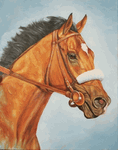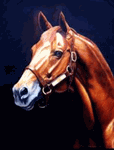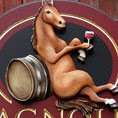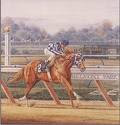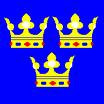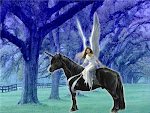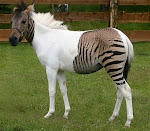
The expression a horse of a different color is believed to have originated – at least in print – with Shakespeare, who used the phrase “a horse of the same colour” in his play Twelfth Night to indicate agreement between ideas. By the late eighteenth century, the expression was appearing in its modern form, meaning a situation or matter different from the one originally expected.
Had Shakespeare lived long enough to witness the explosion of colors in the modern Thoroughbred, he might have coined another phrase or two. While bay, chestnut, brown, roan, and gray remain the breed’s standard colors, fanciers of unusually colored Thoroughbreds can now find paints, buckskins, cremellos, palominos, and whites to round out the equine palette. Not all of these colors are as yet recognized by The Jockey Club, but they are becoming more widely recognized among breeders and fans, particularly in sport horse circles.
The first of the “new” colors to earn The Jockey Club approval was white, which has often drawn reverence or even awe. Among the ancient Romans and their later European successors, the white horse symbolized victory and was therefore the preferred mount for triumphant kings and generals. Other cultures dedicated such horses to the gods, or considered them particularly suitable for sacrifice. Many considered the birth of a white foal to be a portent for good or evil.
.





